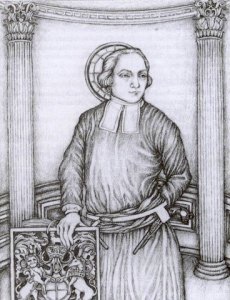|
J. William T. "Bill" Youngs, American Realities, Volume One:
Historical Episodes from First Settlements to the Civil War, Chapter Five |
Bostonians Reading Stamp Act, courtesy of the Wikipedia Commons
|
5. Divided Loyalties
|
|
|
We are so accustomed to thinking of the American Revolution as a natural and righteous event that we find it difficult to comprehend its Loyalist opponents. By presenting a sympathetic picture of one of the most articulate Loyalists, this essay tries to draw us into the problem of doing justice to both sides in the Revolution. We begin with Jonathan Boucher’s early life in England, his career as a minister in Virginia and Maryland, and his hostility to the Revolutionary movement. After we watch Boucher depart for England with his American wife, the essay leads us to consider the elements of temperament and ideology that separated Tories such as Jonathan Boucher from the patriots.
|
Author Reads From the Text
On May 4, 1775, George Washington boarded a ferry at Alexandria, Virginia, to cross the Potomac River. The Battles of Lexington and Concord had been fought two weeks before, and he was now on his way to the Continental Congress at Philadelphia. As his boat crossed the river, Washington spied an old friend, the Reverend Jonathan Boucher, on board another ferry. The people on Boucher’s boat gave Washington three cheers, and he, in turn, beckoned them to stop so that he could come aboard and shake their hands. According to Boucher, “Everybody seemed to be on fire, either with rum, or patriotism, or both.”
As Boucher greeted Washington, he was afire with neither rum nor patriotism. Instead, he was worried about the events that threatened to divide Britain and America. In a “few disturbed moments of conversation” he warned Washington that the troubles between England and America would surely lead to civil war and colonial independence. Washington tried to reassure Boucher, telling him that his fears were groundless and that if Boucher “ever heard of him joining in any such measures … [he] had his leave to set him down for everything wicked.”
As Boucher greeted Washington, he was afire with neither rum nor patriotism. Instead, he was worried about the events that threatened to divide Britain and America. In a “few disturbed moments of conversation” he warned Washington that the troubles between England and America would surely lead to civil war and colonial independence. Washington tried to reassure Boucher, telling him that his fears were groundless and that if Boucher “ever heard of him joining in any such measures … [he] had his leave to set him down for everything wicked.”

